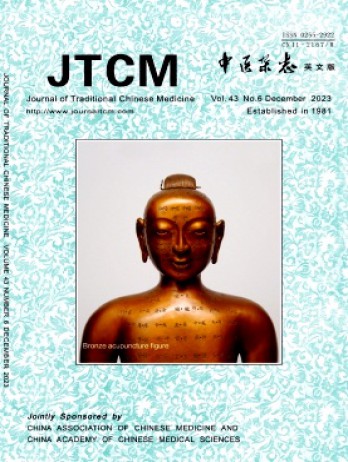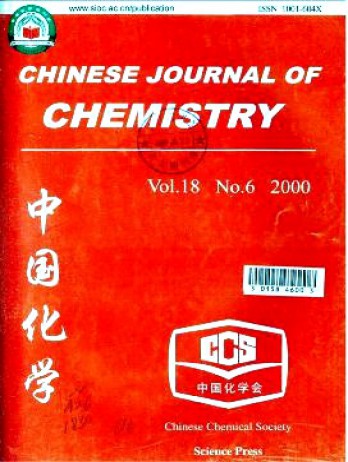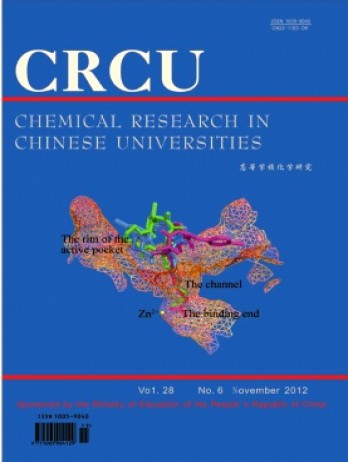《Journal of Traditional Chinese Medicine》雜志論文格式要求:
Abstract;
A concise and factual abstract is required. The abstract should state briefly the purpose of the research, the principal results and major conclusions. An abstract is often presented separately from the article, so it must be able to stand alone. For this reason, References should be avoided, but if essential, then cite the author(s) and year(s). Also, non-standard or uncommon abbreviations should be avoided, but if essential they must be defined at their first mention in the abstract itself.
Keywords;
Immediately after the abstract, provide a maximum of 6 keywords, using American spelling and avoiding general and plural terms and multiple concepts (avoid, for example, 'and', 'of'). Be sparing with abbreviations: only abbreviations firmly established in the field may be eligible. These keywords will be used for indexing purposes.
Abbreviations;
Define abbreviations that are not standard in this field in a footnote to be placed on the first page of the article. Such abbreviations that are unavoidable in the abstract must be defined at their first mention there, as well as in the footnote. Ensure consistency of abbreviations throughout the article.
Acknowledgements;
Collate acknowledgements in a separate section at the end of the article before the references and do not, therefore, include them on the title page, as a footnote to the title or otherwise. List here those individuals who provided help during the research (e.g., providing language help, writing assistance or proof reading the article, etc.).
Math formulae;
Please submit math equations as editable text and not as images. Present simple formulae in line with normal text where possible and use the solidus instead of a horizontal line for small fractional terms, e.g., X/Y. In principle, variables are to be presented in italics. Powers of e are often more conveniently denoted by exp. Number consecutively any equations that have to be displayed separately from the text (if referred to explicitly in the text).
Footnotes;
Footnotes should be used sparingly. Number them consecutively throughout the article. Many word processors can build footnotes into the text, and this feature may be used. Otherwise, please indicate the position of footnotes in the text and list the footnotes themselves separately at the end of the article. Do not include footnotes in the Reference list.
基本信息
《Journal of Traditional Chinese Medicine》雜志是由國(guó)家中醫(yī)藥管理局主管,中華中醫(yī)藥學(xué)會(huì)主辦的國(guó)內(nèi)外公開發(fā)行的學(xué)術(shù)理論期刊,創(chuàng)刊于1981年,是國(guó)內(nèi)醫(yī)學(xué)領(lǐng)域具有廣泛影響力的權(quán)威刊物。
該雜志國(guó)內(nèi)刊號(hào)為11-2167/R,國(guó)際刊號(hào)為0255-2922,現(xiàn)被CSCD 中國(guó)科學(xué)引文數(shù)據(jù)庫(kù)來(lái)源期刊(含擴(kuò)展版)、CA 化學(xué)文摘(美)、SCI 科學(xué)引文索引(美)等權(quán)威數(shù)據(jù)庫(kù)收錄。
此外,還榮獲多項(xiàng)榮譽(yù),如:中國(guó)優(yōu)秀期刊遴選數(shù)據(jù)庫(kù)、Caj-cd規(guī)范獲獎(jiǎng)期刊等,這些都體現(xiàn)了該雜志在推動(dòng)醫(yī)學(xué)理論與實(shí)踐發(fā)展方面的重要貢獻(xiàn)。
欄目設(shè)置
《Journal of Traditional Chinese Medicine》雜志欄目涵蓋醫(yī)學(xué)領(lǐng)域多個(gè)維度,包括:臨床觀察、基本調(diào)查、評(píng)論、問答、專家論壇、臨床案例討論等。
作為一本具有較高學(xué)術(shù)水平和影響力的醫(yī)學(xué)雜志,多年來(lái)一直致力于推動(dòng)醫(yī)學(xué)領(lǐng)域的改革與發(fā)展,為醫(yī)學(xué)工作者和研究者提供了一個(gè)交流和探索的平臺(tái),對(duì)促進(jìn)我國(guó)醫(yī)學(xué)事業(yè)的發(fā)展起到了積極的作用。
聲明:本信息依據(jù)互聯(lián)網(wǎng)公開資料整理,若存在錯(cuò)誤,請(qǐng)及時(shí)聯(lián)系我們及時(shí)更正。



